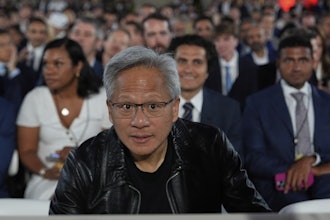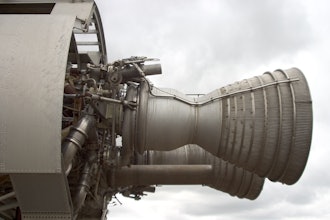
----
Matthew B. Elliott, Michigan State president, Global Commercial Banking, Bank of America Merrill Lynch
What will be the biggest trend impacting the investments manufacturers make in 2015?
Driven in part by a favorable financing environment in the U.S. for the manufacturing industry, we are expecting a continued increase in manufacturing companies reshoring their businesses. Now is a great time to invest in bringing business back to the states and making capital expenditures and commercial real estate investments. Businesses make these decisions to benefit from a number of factors, such as favorable energy prices, rising wages in China, shorter supply chains and faster speed to market. On the other hand, given recent exchange rate volatility, it will be interesting to see how the strengthening dollar impacts these sourcing decisions.
There has been a lot of positive news regarding U.S. manufacturing over the last 18 months. Is there one particular report of piece of data that stands out to you?
In our recently released Bank of America Merrill Lynch 2015 CFO Outlook, we found that CFOs at manufacturing companies are significantly more optimistic about their year-over-year growth. In fact, nearly half of CFOs at manufacturing companies surveyed expect to see an increase in profits (46 percent), while over two thirds expect higher sales in 2015 (68 percent). We are excited about these forecasts, which reveal 2015 as a year of optimistic growth for the manufacturing sector.
If you could fast-forward 12 months, what would be the most interesting thing to find out about how manufacturing performs?
We will see manufacturers seeking opportunities to expand and grow, both domestically and internationally. According to the 2015 CFO Outlook, manufacturers are looking to increase their presence in Asia, while also establishing new operations in Latin America, Asia and Europe. On the domestic front, manufacturing plants are being developed all throughout the U.S., but the Midwest specifically is seeing a lot of activity—as more than 70 companies have reshored to that region, according to the Reshoring Initiative Library. It will be interesting to see this new manufacturing hub emerge and how that will impact local businesses and the regional economy.
If you could give U.S. manufacturers one thing, what would it be?
Currently, we are experiencing a skilled labor shortage in the U.S., particularly within the industrial industry. U.S. manufacturers are focusing on attracting and retaining the right talent, including engineers and machinists. As the economy improves and manufacturers look to ramp up activity, companies will need to invest in people in order to successfully carry out their operations.
---
Dan Miklovic, principal analyst, LNS Research
From an IT perspective, what will be the biggest trend impacting the investments manufacturers make in 2015?
In 2015 Big Data will be incredibly significant within the manufacturing sector. Different segments of manufacturing will treat Big Data differently, but it is the one thread that will cross virtually every sector of manufacturing. For asset intensive manufacturing operations it will be focused on asset health, while for discrete manufacturers such as automotive and aerospace it will encompass an exponential growth in the data related to product content and manufacturing conditions. This would include labor data such as certifications of the people actually assembling the product as well as product stewardship related data. For food and beverage and life sciences companies it will be the combination of these factors, as manufacturers increasing must improve traceability. Every industry will have some variation on this trend. For IT departments the implications range from network capacity, to security, to transfer, to the Cloud.
There has been a lot of positive news regarding U.S. manufacturing over the last 18 months. Is there one particular report of piece of data that stands out to you?
The return of jobs to the U.S. as companies bring back domestic manufacturing is a stand-out statistic. While the actual numbers vary depending on the type of industry it reflects the fact that technology is once again restoring American competitiveness, which is actually good for the global economy. Even low-cost producers like China are going to benefit from jobs moving back to the U.S. because it means their own economies are growing to the point where wages are increasing and they are developing internal demand, becoming less dependent on exports to sustain their economies. For the U.S. it means employment is increasing, which will boost our economy as well.
If you could fast-forward 12 months, what would be the most interesting thing to find out about how manufacturing performs?
The cost of energy. If it keeps on its downward track there will be double impact on manufacturing. Many manufacturers will see their cost of production go down; at the same time increased spending by consumers will drive demand higher. On the other hand if the low prices we are seeing today are short-lived then the opposite will be true.
Which of the following technologies do you think will have the most impact in 2015: 3-D printing, robotics, enhanced connectivity or network security?
These all vary by industry so we have to take each one separately:
3-D printing—Anywhere you need low volume production like the spare parts environment or the aerospace market, or you are pursuing a strategy of mass customization, 3-D printing will be the most important technology for you in 2015.
Robotics—If you are in an industry that requires extensive labor, such as assembly operations or hazardous/inhospitable locations like deep in mines or extreme climatic environments, robotics will be an important technology. In addition, this will also be true if you have precision requirements combined with high-speed assembly like the medical device or similar industries.
Enhanced connectivity—Where the information content about your manufacturing conditions, like in regulated industries or in those where uptime is the difference between profitability and losses, then the ability to leverage every last iota of information about the process(es) will be a critical success factor; so for those industries enhanced connectivity will be the most important technology.
Network security—This is the wildcard issue. If what has happened to Sony becomes widespread across the industry in an escalating cyber terrorism campaign, then all the other bets are out the window and network security will be the issue everybody feels is most important in 2015.
If you could give U.S. manufacturers one thing, what would it be?
Smart connected devices: The more information we have about what is going on in our manufacturing operations the easier it will be to pursue Operational Excellence, no matter what form it takes in your industry. Regardless of energy price swings, geopolitical turmoil, and the direction the economy takes, enhanced information, properly leveraged, gives manufacturers the power to compete.























